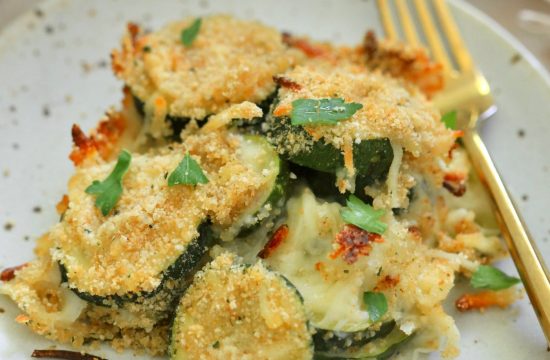Article by Dr Raghuram Y.S. MD (Ay) & Dr Manasa, B.A.M.S
What is cold intolerance? Things to know about
Not a disease – Cold intolerance, while not an illness in itself, serves as a telltale symptom of various underlying health conditions.
Extreme sensitivity – It manifests as an extreme sensitivity to cold temperatures, surpassing the typical sensation of chilliness experienced on a cool day outdoors.
Indicator – Linked intricately to factors such as thyroid regulation, hypothalamic function, and blood circulation, cold intolerance often signals an imbalance or dysfunction within the body.
Association – It can accompany a range of disorders, including anaemia, hypothyroidism, fibromyalgia, and anorexia nervosa. Individuals with chronic health issues or minimal body fat are particularly susceptible to this condition.
Discomfort – Those afflicted with cold intolerance often find themselves discomforted by cold temperatures even when others nearby are comfortable or warm.
Understanding the nuances of cold intolerance is crucial for identifying and addressing the underlying health concerns.
Definition of cold intolerance
It is defined as a set of symptoms including pain, tingling, numbness, chills, stiffness, weakness, swelling or skin colour changes on exposure to cold.
Causes of cold intolerance
- Mechanism behind cold intolerance, issues causing it
Cold intolerance stems from the regulation of body temperature by various systems, notably the hypothalamus acting as the body’s thermostat.
The hypothalamus influences the thyroid gland, which in turn regulates metabolism crucial for generating heat.
Factors like blood flow and body fat distribution play roles in heat maintenance and distribution, respectively.
Cold intolerance can result from issues related to these processes.
It can also be a symptom of various health conditions. These health conditions themselves form the causes of cold intolerance and are listed below
- Health conditions which cause cold intolerance
Below mentioned are the important causes for cold intolerance –
– Anaemia – deficiency of healthy red blood cells.
– Anorexia – leading to loss of body fat.
– Hypothyroidism – inadequate production of thyroid hormones.
– Blood vessel disorders – e.g., Raynaud’s phenomenon which limits blood flow to the extremities.
– Disorders of the hypothalamus – impacting temperature regulation.
– Fibromyalgia – causing widespread pain and discomfort.
– Vitamin B12 deficiency
– Diabetes
– Nerve injuries
– Low body mass index
– Previously injured skin, such as from frostbite, may retain sensitivity to cold even after healing.
Risk factors of cold intolerance
Smoking increases the risk of cold intolerance.
Occupational use of hand-arm vibration machines may increase the risk of developing cold intolerance.
Symptoms of cold intolerance
Symptoms of cold intolerance may manifest as –
– Pain, shivering and numbness, potentially localized to specific areas of the body.
– Possibility of widespread pain and numbness affecting the entire body in certain individuals.
Additional symptoms might comprise of –
– Changes in the skin colour – such as appearance of pale, red or bluish hues,
– Stiffness, weakness and swelling.
When is the right time to see the doctor?
– Individuals with a history of cold intolerance should consult a healthcare professional if there are persistent cold sensations despite attempts to alleviate them.
– If the escalating symptoms or heightened concerns regarding sensitivity to cold necessitate a medical assessment.
Diagnosis of cold intolerance
Usually, the main complaint in this condition is ‘cold intolerance’ itself. They physician will try to figure out the cause behind it.
In the process, the healthcare providers conduct comprehensive physical examinations and relevant diagnostic tests to identify the root causes of cold intolerance.
Treatment strategies and interventions tailored to address specific symptoms are recommended by healthcare professionals based on individual needs and diagnostic findings.
Treatment and management of cold intolerance
Cold intolerance is not an illness but a symptom of an underlying condition, and treatment varies depending on the diagnosis received from a healthcare professional.
Causes of cold intolerance that may require treatment include –
Anaemia – Treatment focuses on addressing the underlying cause, which may involve taking iron supplements.
Anorexia – Long-term treatment involving medications to manage symptoms, support from a multidisciplinary medical team including nutritionists and psychological counsellors, and participation in support groups.
Hypothyroidism – Managed with daily oral synthetic hormones, typically requiring lifelong treatment with occasional dosage adjustments.
Vascular problems – Treatment approaches vary based on the underlying cause, potentially involving surgery and medication in severe cases.
Disorders of the hypothalamus – Treatment strategies depend on the specific cause and may include surgery or radiation for tumours, hormone replacement therapy, or procedures to address bleeding or infection.
Fibromyalgia – Treatment aims to alleviate symptoms and often includes medications for pain management, physical therapy, cognitive behavioural therapy, and participation in support groups.
Some beneficial tips
– People with cold intolerance may find relief from their symptoms by wearing appropriate clothing during the winter.
– Wearing sufficient layers of clothing can help protect them from the cold weather and keep their body warm.
– It may also be beneficial to avoid going outside during extremely cold days to prevent cold exposure.
– People with low body fat may also consider seeing a specialist.
– Nutritionists can recommend an appropriate diet based on the nutritional requirement of each individual to achieve a healthy body fat level.
– If someone smokes, they may wish to quit. Quitting smoking can help with any circulation issues and improve symptoms.
What are the possible complications of cold intolerance?
– Cold intolerance is not a standalone ailment but rather a symptomatic manifestation of an underlying health issue.
– Neglecting the root causes of cold intolerance may exacerbate symptoms and contribute to the deterioration of underlying health conditions.
– Untreated conditions such as anaemia, hypothyroidism, or anorexia have the potential to evolve into further health complications, some of which may pose life-threatening risks for certain individuals.
Cold Intolerance – Ayurveda Understanding
Excess coldness in the body, according to Ayurveda, is due to abnormal increase or aggravation of vata and or kapha. Both are cold components in the body. Their increase can build up cold in the body and may also cause cold intolerance. Cold intolerance may also indicate depletion in pitta and its subtypes. Fire naturally resides in pitta and in a state of balance helps maintain and regulate heat in the body.
Diseases caused by these morbid vata and or kapha also produce excessive coldness in the body which when not controlled can lead to intolerance.
Likewise, agnimandya – decrease in digestive fire / strength and or formation of ama can produce cold intolerance.
This increased coldness in vata or kapha disorders will be associated with symptoms of those diseases which may include pain due to vata or heaviness due to kapha.
Treatment principles include balancing vata and kapha, whichever dosha is aggravated or treating vataja or kaphaja diseases promptly.
Related Reading – ‘Cold Intolerance – Ayurveda Understanding’














